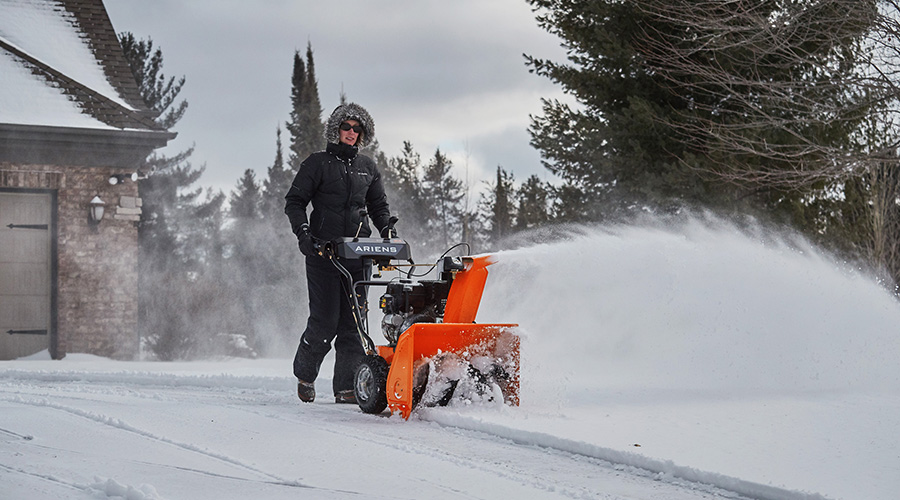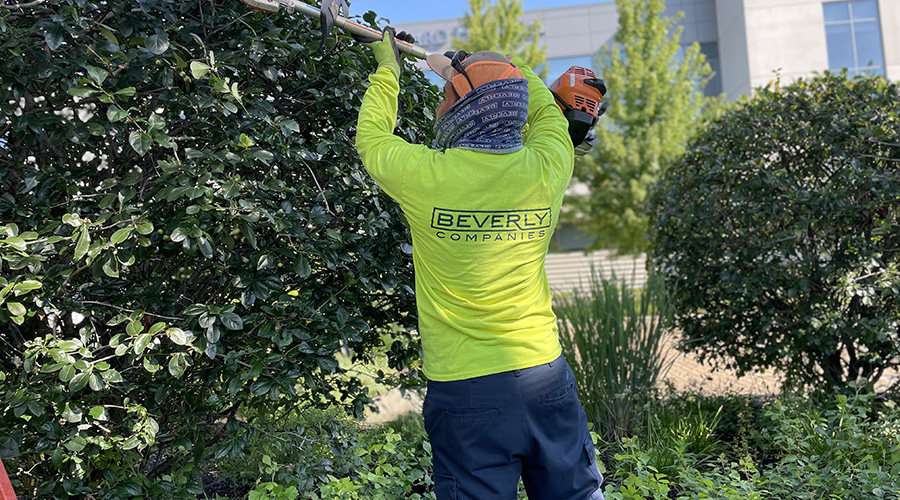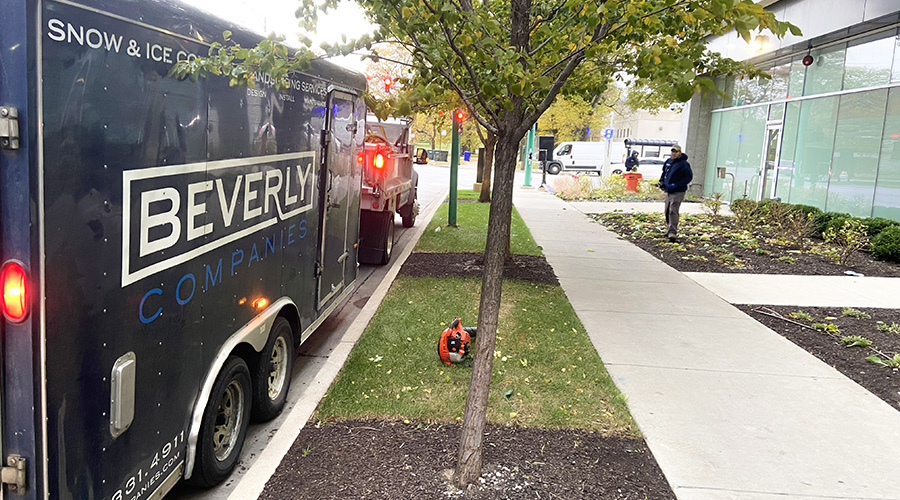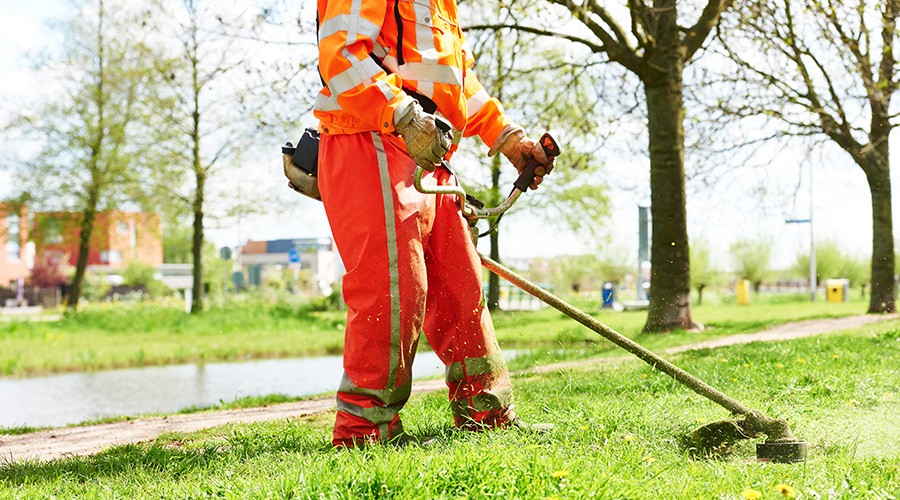Concrete: Paving the Way to Savings
Preventing problems requires that managers understand types of trouble, as well as materials and methods to address them
Occupants of and visitors to institutional and commercial facilities generally take concrete surfaces and structures for granted — until problems occur. Concrete cracking, spalling, heaving and settling are among the problems that can lead to costly repairs and, in the worst cases, create hazards for those walking on the surfaces.
Implementing a comprehensive maintenance strategy can help managers to prevent costly and potentially dangerous problems related to concrete parking areas and sidewalks, and it can extend their performance lives.
Inspections
Managers should schedule inspections every one to two years to compile information on defects and establish the pavement’s deterioration rate. The inspector should separate paved areas into sections based on conditions and use. Sidewalks, roads, truck docks, and parking areas should be in separate sections, due to varying traffic levels and deterioration rates.
Next, the inspector should perform a visual inspection by walking the pavements and noting defects within each section. Managers then can review a written summary of pavement conditions and ratings to determine the sections that need preventive maintenance (PM), as well as the estimated cost to complete the repair.
For more information on establishing a pavement evaluation system, see the accompanying sidebar at the bottom of page.
Information generated by the inspections — along with accurate records of construction history, defects and pavement deterioration rates — form a database managers can use to set priorities in developing a PM plan.
The plan will help managers establish and update a PM plan. A well-documented pavement evaluation and accompanying budget plan also will help establish a capital-improvement budget. Managers can update the budget annually and use the PM plan to justify budget requests for annual pavement maintenance.
It is not always correct to assume that the lowest-rated pavements should be repaired first. Instead, managers should consider addressing immediate safety hazards that might arise in any section.
Normally, workers cannot make all repairs and reconstruction in a single year, so they also can allow pavements that are in below-average condition to deteriorate until reconstruction is necessary, and they can address the PM needs of pavement rated fair to good as a way to significantly extend the life of these pavements.
Typical defects and problems in concrete pavements generally fall into three categories — surface defects, surface deformation, and cracking. It is important for managers to distinguish the severity and frequency of the defect throughout each section, as well as any conditions that might contribute to pavement deterioration. This will affect the decision on the most appropriate PM option.
Defects
The most common surface defects consist of surface polishing or wearing, map cracking, pop-outs, scaling, and joint spalling.
Surface polishing or wearing usually is associated with older pavements in areas with very high traffic — intersections, traffic lanes and walkways near doors, among them — that have lost their skid-resistant texture. Repair options for such defects include surface grinding or using a special epoxy-surfacing compound designed to restore the skid-resistant texture.
Map cracking, pop-outs and scaling are minor defects that usually do not cause long-term problems. But they do cause the concrete to become aesthetically unappealing. Only very severe conditions generally warrant repairs, and a partial-depth patch usually corrects the problem.
Spalling involves the loss of a piece of concrete from the pavement surface. This defect arises from freeze-thaw cycles, cracking, or poor-quality materials. Workers can use a partial-depth patch on small areas of spalling, but joint spalling might require a full-depth patch if the deterioration is greater than one-third of the slab’s total thickness.
Deformations
The most common surface deformations include slab faulting, pavement settling, heaving, and blow-ups.
Faulting is the movement of the slab — usually at a joint — that causes an elevation difference between two slabs. Faulting results from the pumping of subgrade soils, which creates voids underneath the slab. When heavy traffic drives over these voids, the concrete cracks and sinks below the original elevation. Surface grinding or mud jacking can repair minor faulting, while more severe faulting requires joint replacement and patching.
Pavement settling and heaving also arises from slab movement, but unstable and poorly drained subgrade soils also can cause the problem. Repairs usually are limited to sealing joints or cracks to prevent further water intrusion into the subgrade.
Reconstruction is necessary when the deterioration becomes severe. Managers should consider subgrade stabilization and improved drainage when designing the new pavement.
A concrete slab blow-up involves a significant raising of the concrete at a joint caused by internal pressures resulting from extremely hot temperatures. Dirt and sand get into the joints and prevent the concrete from expanding, causing the pavement to rise and crushing the concrete at the joint. Workers can repair these areas by sawing relief joints and replacing blown-up areas.
Cracking is the most common defect in concrete pavements. Transverse cracks, which occur across the direction of traffic, can develop in the middle of the slab if joints are spaced too far apart — generally, more than 15 feet. Corner cracks can develop at joints from insufficient sub-base support and localized heavy loads from truck or bus traffic.
Excessive transverse slab cracking and corner cracking indicate that the pavement was poorly designed for its intended use. D-cracking is the fine cracking along joints and usually starts from the bottom and works its way to the surface. Its cause is poor-quality aggregates that break down due to freezing and thawing.
Repairs for these types of cracking are usually limited to sealing the crack to prevent further water intrusion, and full-depth repairs. Reconstruction might be necessary in more severe cases.
Repair Strategies
Repairs to these defects can be very costly. The most cost-effective repair and PM method is sealing the joints and cracks. Studies have shown that large amounts of water entering a pavement through open cracks and joints can severely damage the pavement and shorten service life.
Depending on existing pavement conditions, workers should perform some repairs before applying the sealant. Such repairs include:
• full- and partial-depth repairs to corner cracks and joint spalls
• improvements to subsurface and roadside drainage
• mud jacking of faulty pavement
• grinding of the pavement to provide a smooth surface or improve traction.
By completing these repairs, managers can extend the performance lives of the sealant and pavement, reducing their life-cycle costs.
Sealant Selection
Selecting the proper sealant material to address a specific deficiency is crucial, and a manager’s choice will depend on the pavement type and its location. Each variety of sealant material on the market has its own characteristics and costs.
In choosing a sealant material, maintenance managers should consider the pavement condition, traffic volume, and climate. Local contractors and construction-material suppliers also can help managers choose sealants that are the most appropriate for a particular application.
A concrete pavement’s performance life should exceed 20 years if the area is designed correctly and maintained properly, so quality control is instrumental during construction process to ensure proper installation and quality workmanship. Poor construction or maintenance can cut the performance life of pavement in half, increasing both the maintenance and reconstruction costs.
Russell Timmerman — (319) 393-9100— is a pavement consultant for Benchmark Inc., a professional roof and pavement consulting company with offices in Cedar Rapids, Iowa, and Elm Grove, Wis.
Evaluation: The First Step
Properly managing concrete pavement starts with establishing an evaluation system to monitor existing conditions. One such evaluation system is the Pavement Surface Evaluation and Rating (PASER) system developed at the University of Wisconsin-Madison.
The system provides a rating system based on a visual appraisal. The PASER manual shows actual defects in pavements, possible causes, preventative maintenance solutions, and rating criteria. The system rates pavement on a scale of 1 to 10, where 1 represents a failed surface and 10 represents pavement in excellent condition.
It is important that a qualified person with experience in the construction industry uses this manual as a reference tool to evaluate any pavement.
— Russell Timmerman
|
Related Topics:











